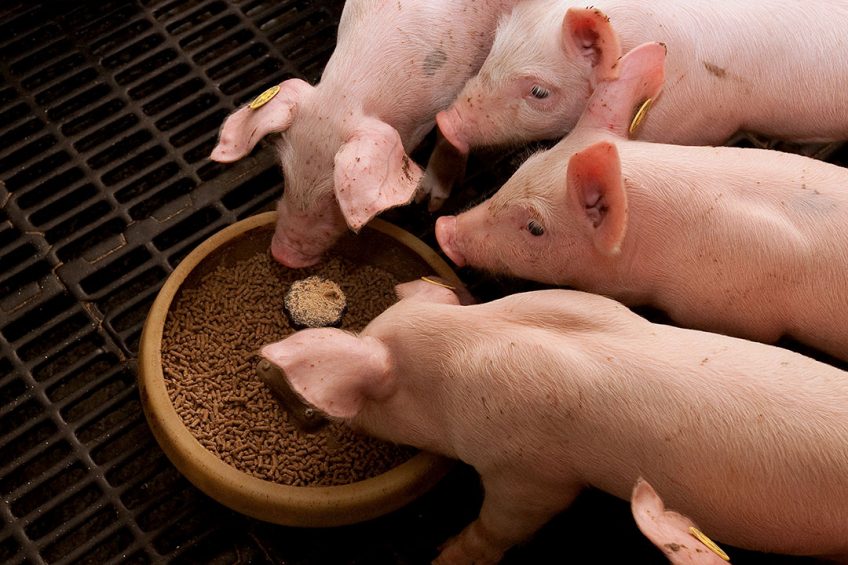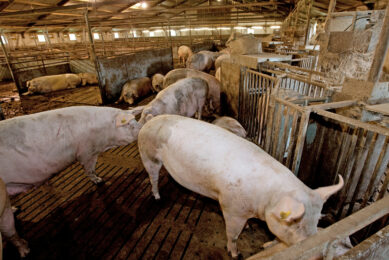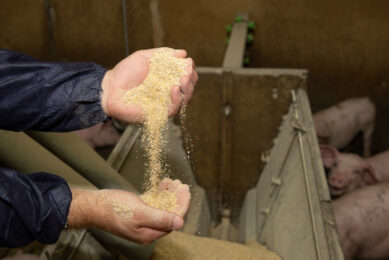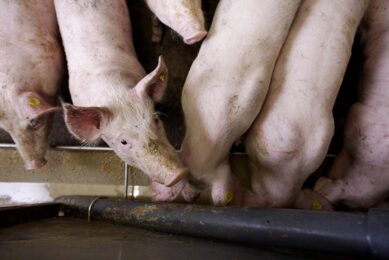Deciphering the dietary fibre message

Dietary fibre is complex; it is a short message, but clear for animal nutritionists. The key to unravelling this complexity is interpreting the analytical data and the biological response that fibrous ingredients will elicit.
Dietary fibres can be viewed as beneficial or detrimental based on the context of the total diet. When dietary fibres are poorly fermented, they still promote laxation, epithelial cell regeneration, and favourable stool quality. When dietary fibres are rapidly fermented, they provide nourishment for the intestinal bacteria, which in turn produce beneficial metabolites that promote animal health. In contrast, excessive fermentable dietary fibre can result in osmotic imbalances and other intestinal disorders. What are some of the new ways of viewing and characterising fibre and how can they help us construct improved diets?
Capturing dietary fibre
Crude fibre was developed in the 1860’s to estimate the indigestible fractions of a feedstuff (AAFCO, 2017). This method to classify dietary fibres is as the name suggests, crude, and has been found to have very little useful information in modern diet formulation for simple stomached animals. Unfortunately, this methodology and label guarantee is still used to this day. Numerous other methodologies are also available with detergent methods and total dietary fibre methods being the most prevalent. The detergent methods include neutral detergent fibre (NDF), acid detergent fibre (ADF), and acid detergent lignin (ADL) (see figure 1). These methodologies allow one to identify the insoluble hemicellulose, cellulose, and lignin, respectively, within an ingredient.
Figure 1 – The detergent methods include neutral detergent fibre (NDF), acid detergent fibre (ADF), and acid detergent lignin (ADL).

The total dietary fibre (TDF) methodology accounts for a broader array of fibre types that can be partitioned into insoluble dietary fibre (IDF) and soluble dietary fibre (SDF). In combination with detergent analyses, one can develop an understanding of the chemical composition and functionality of a dietary fibre source. These are only values based on the analytical methodology used to measure it. It does not explain the physiological effects or the complexity of the fibre substrate, since sources of dietary fibre are heterogeneous and their chemical composition does not tell the whole story. Understanding the fermentation rate and degree that a fibre source will be degraded is important for determining the physiological effect and location of that effect in the gut. The complexity of dietary fibre, the microbiome, and the flow of information during fermentation is staggering.
Also read: Role of carefully selected dietary fibres
Right place at the right time: Fibre fermentation is dynamic
Deciphering the complexity of dietary fibre begins to transpire when a critical dietary component is taken into account: time. Nutritional studies in humans and animals have convincingly revealed that when to eat is as equally important as what to eat. (van Erp, 2019). Since most all life processes are controlled by oscillating events of which eating time is a major cue to synchronise biochemical activities, it is not a stretch to visualise fermentation rates, which are extensions of eating time, modifying nutrient delivery rates and having an influence on such things as growth rate, energy partitioning, reproduction, and general well-being of the animal. The goal is to match the nutrient requirements of the microbial species that are oscillating through the daily cycle (Sinturel et al., 2017; Parker et al., 2019; Uhr et al., 2019) and to ensure the appropriate nutrients are delivered at the proper moment in the cycle. To apply this nutritional concept, a linear model must be developed that can accommodate a dynamic component while maintaining additivity.
Deciphering the dietary fibre message via kinetics
When kinetics of dietary fibre are incorporated into the understanding of analytical data of ingredients, one can begin to unravel not only the response it will elicit in the gut, but also where and when dietary fibre will elicit a response in the gut. This new information helps enable the diet to maintain, and even boost vitality of farm animals and pets. In young animals, for example, utilisation of dietary fibre kinetics accomplishes three goals. The first goal is to use rapidly fermentable dietary fibre to help smooth the transition of the young animal from mother’s milk, which also contains rapidly fermentable dietary fibre in the form of oligosaccharides and other carbohydrates.
This rapid fermentation stimulates bifidogenic microbiota growth, competing with and reducing the proliferation of pathogenic bacteria. The second goal is to provide slowly fermentable dietary fibre to the young animal to maintain carbohydrate fermentation throughout the large intestine. The final goal is to optimise intestinal motility, laxation, osmotic balance and stool quality through the utilisation of dietary fibre that is resistant to fermentation. The animal [host] receives little nourishment from resistant fibre, but without it, the intestinal tract would strain to move digesta. Dietary fibre and its fermentation rates and physical characteristics need to be in balance (synchronised via kinetics) to optimise the health of the animal.
Also read: The difference between guessing and knowing
Dietary fibre: Code cracked
Dietary fibre plays a primary role in two key, yet understudied areas in animals: microbial populations and nutrient synchronisation. The mystery of the role of dietary fibre in the health of our animals begins to unravel when we add a new dimension to linear diet formulation: time. Incorporation of time into ingredient characterisation enables a nutritionist to focus diet formulation on synchronisation of nutrient digestion, enhanced microbial populations, and improved animal performance. Cracking the dietary fibre code improves general animal health and performance which has the potential to result in improved economic gains.











